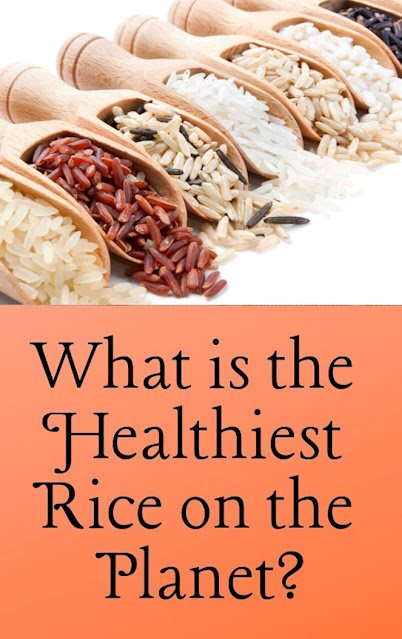Rice is one of the most widely consumed staple foods around the world, providing a significant portion of daily calories for many people. With various types of rice available in the market, it can be challenging to determine which type is the healthiest. This article aims to shed light on the different types of rice and identify the one that offers the most nutritional benefits.
What Type of Rice is Healthiest?
There are at least a dozen different types of rice to choose from at the grocery store: long-grain, short-grain, white, brown, basmati, instant, converted, whew! Which one is best?
Cooking with Rice
There are fairly big differences between the various kinds of rice in terms of cooking times and the texture of the cooked rice. So, if you are cooking from a recipe, it’s important to pay attention to what kind of rice the recipe calls for. Substituting a different kind of rice can really change how a recipe comes out—not always in a good way.
The Different Types of Rice
The different types of rice include the following:
Short-grain rice is very starchy and cooks up soft and sticky. It’s used in things like sushi, paella, and risotto.
Long-grain rice contains less starch so the cooked grains are drier and more separate. It’s often used in pilafs or dishes with a lot of sauce.
Jasmine and basmati are long-grain varieties that have been cultivated to bring out distinctive flavor profiles. They often turn up in Indian and Asian food.
Brown rice—which is also available in long and short grains—is a lot chewier and heartier than white rice and takes about twice as long to cook.
You can also buy instant or converted rice. Both have been partially cooked and then dehydrated. If you’re using a pre-processed rice, it’s important to follow the preparation instructions on the package.
Nutritional Aspects and Culinary Uses
Rice is a versatile staple food consumed worldwide, with a multitude of varieties available. While the culinary properties and uses of rice may differ, it is essential to understand the nutritional aspects associated with different types of rice. This article aims to provide insights into the nutritional profiles of various rice varieties, enabling you to make informed choices for a balanced diet.
- Brown Rice: Nutritional Profile: Brown rice is a whole grain rice that retains its bran and germ layers, offering a rich source of fiber, B vitamins, iron, and magnesium. It is also lower in calories and carbohydrates compared to white rice. Culinary Uses: Brown rice has a slightly nutty flavor and a chewy texture. It works well in pilafs, stir-fries, salads, and as a side dish for various cuisines.
- White Rice: Nutritional Profile: White rice is the most commonly consumed rice type, but it undergoes a refining process that removes the bran and germ layers. As a result, white rice loses some of its fiber, vitamins, and minerals. Culinary Uses: White rice has a milder flavor and a fluffy texture when cooked. It is a popular choice for Asian dishes, rice-based desserts, and as a side dish.
- Basmati Rice: Nutritional Profile: Basmati rice is a long-grain rice known for its distinct aroma and flavor. It contains carbohydrates, protein, some vitamins, and minerals like thiamine and selenium. Culinary Uses: Basmati rice is widely used in Indian, Middle Eastern, and Persian cuisine. It complements curries, biryanis, and pilafs due to its fragrant nature.
- Jasmine Rice: Nutritional Profile: Jasmine rice is a fragrant rice variety with a soft and slightly sticky texture. It provides carbohydrates, some protein, and small amounts of vitamins and minerals. Culinary Uses: Jasmine rice is commonly found in Southeast Asian cuisine, particularly Thai dishes. Its aroma and delicate flavor make it ideal for serving with curries, stir-fries, and other Asian-inspired meals.
- Wild Rice: Nutritional Profile: Wild rice is not a true rice but a seed derived from aquatic grass. It offers high amounts of protein, fiber, antioxidants, and essential minerals such as zinc and phosphorus. Culinary Uses: Wild rice has a nutty flavor and a chewy texture. It works well in salads, pilafs, soups, and as a stuffing ingredient.
- Black Rice: Nutritional Profile: Black rice, also known as forbidden rice, is a whole grain rice packed with antioxidants, fiber, iron, and other beneficial plant compounds. It is notably rich in anthocyanins. Culinary Uses: Black rice has a slightly sweet and nutty flavor. It is suitable for both savory and sweet dishes, including salads, risottos, and desserts.
Conclusion
While all types of rice can be part of a healthy diet, brown rice stands out as the healthiest option due to its intact bran and germ layers, which provide essential nutrients and fiber. Wild rice, basmati rice, black rice, and red rice also offer unique nutritional profiles and can be incorporated into a balanced diet. Ultimately, the healthiest rice choice depends on an individual’s dietary needs and preferences.
